 |
||||||||||||||||||||||||
 |
 |
|||||||||||||||||||||||
 |
||||||||||||||||||||||||
 |
 |
 |
 |
|||||||||||||||||||||
| 2015 CIRCLES | 2014 CIRCLES | 2013 CIRCLES | 2012 CIRCLES | |||||||||||||||||||||
|
||||||||||||||||||||||||
 |
 |
|||||||||||||||||||||||

|
Ground Report – East Field (2), Wiltshire, 14/07/07It is difficult to know where to start with a formation of this scale, let alone with the amount of different features at ground level! I am well aware of the potential number of visitors to a formation of this size, and in this location, so I entered a week after it appeared with the intention of taking some shots with the pole, and features on the ground if there were any left. How wrong I was!!! 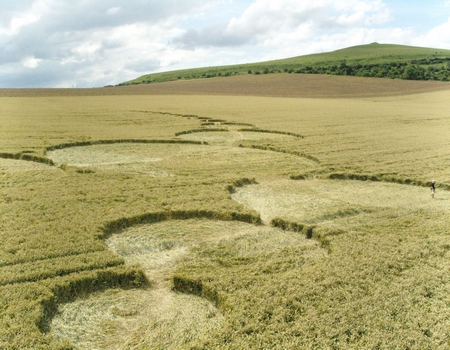
From the beginning it became clear, as can be seen in the image above, that this formation was not going to photograph very well from the pole. Not only the scale of it, but the presence of some weather damage causing the edges to be less defined means it is not the most photogenic! On arrival in the field, and then the formation itself, the undulation becomes apparent. It is very difficult to see one area of the design from any other as the whole thing covers both high and low ground. This is a feature which from the aerial photos is impossible to see. The diameter of the largest circle of all, which is also at the highest point in the field, is 162ft. This is the only measurement I took during this visit for obvious reasons! Despite the number of visitors in the week previous to my visit, due to the surface area there were still many areas seemingly not too trampled, and on closer inspection some of these areas held many secrets! Little White LinesI always report the facts, and the fact is that these were literally everywhere throughout this formation. My opinion is that no conclusion can be drawn from the observation of any feature of the crop laid on the ground or otherwise, and even a combination leaves plenty of doubt in most cases. However, I know that many people do see these ‘crease’ marks on stems as ‘board’ marks. I recommend that we all keep an open mind! 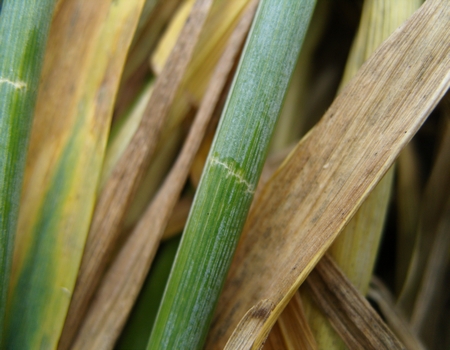
Raised AreasThere are many places, particularly in the larger circles, where the laid crop is not flat to the ground, and appears raised up, sometimes a few inches from the ground. Some of these raised areas are caused by the sheer amount of crop underneath, with many, many stems flowing in different directions. This can be seen in the image below. 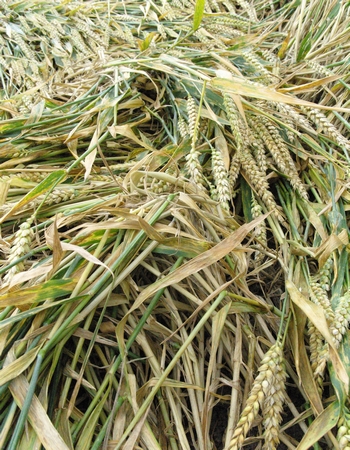
At many of these points, the crop actually flows in the opposite direction to that on the top layer, creating what appears at first glance to be quite a chaotic effect, but then makes sense when explored further. Other raised areas are caused by the stems having been bent over a few inches above the ground, as in the image below. 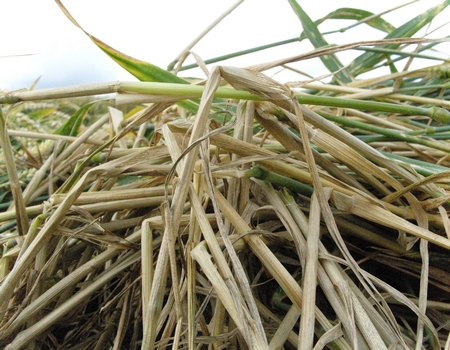
At one point where the crop appears particularly raised from the ground, there is a small nest, probably of a field mouse, deep inside. This appears untouched by whatever forces flattened the rest of the crop. Could this be an example of a caring intelligence at work, or just a lucky mouse? 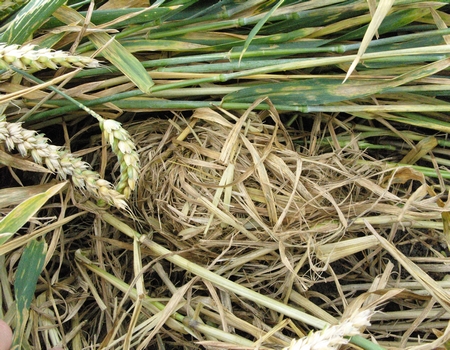
Flow DirectionThe flow of the laid crop is predominantly clockwise, although there are some smaller, outer circles where it is anticlockwise. It does appear, in the larger circles which are at a slight angle due to the undulation of the field, that the crop laid ‘downhill’ is more compacted than that flowing ‘uphill’. The downhill areas, however, are where more of the raised areas I have mentioned previously are situated. Under some raised areas there is an opposing flow. In other parts of the larger circles there are various different directional flows underneath the top layer. There are many examples of narrow strips of crop entering the larger circles from outside the laid area, at right angles to the flow. 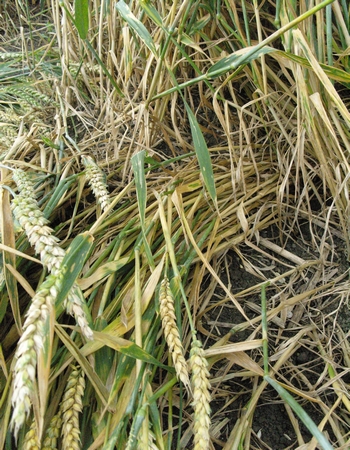
As these strips of crop join the main flow, they follow the clockwise lay and here one of the most compelling pieces of evidence is to be found! Node BendingAs various flows meet, stems are bent at the node allowing them to join the main flow of the laid crop. This occurs throughout many parts of the formation, although I was unable to carefully examine the whole thing! 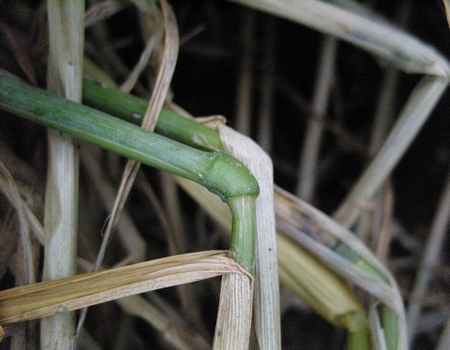
Phototropism can be ruled out by the fact that many of these bent nodes, including in the image above, are situated underneath many layers of crop. Also the fact that the nodes are bent to allow the crop to flow sideways rather than upwards is key. The angle these stems are bent at appears not uniform, as in the image below. 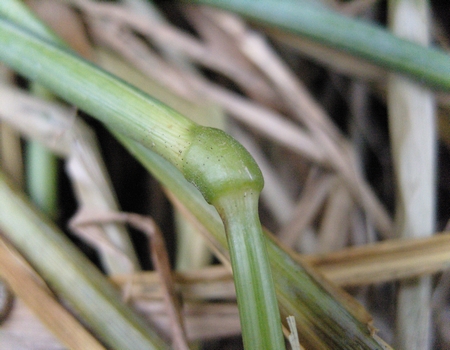
Nodes in the standing crop all have a slight bend, which is generally at the same angle, and this continues right up to the edge of the field. I did not walk into the standing crop from the tramline I walked out on, but the bending occurs at least 2/3 ft away from it. This I have no explanation for, and while unusual, does not explain the node bending at much greater angles within the formation. The image below shows this bending in the standing crop. 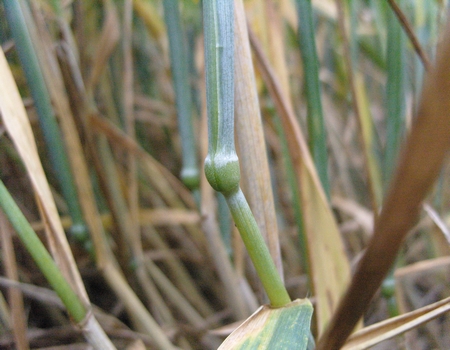
I could probably go on, and on, and on, and no visit to this intriguing and wonderful crop circle could really be long enough to survey it all. While there, I couldn’t help feeling somehow ‘tuned in’, as though I knew every new place I looked was going to reveal yet more amazing detail that I just hadn’t expected at the beginning. What an experience! I hope one that has been shared by others since the appearance of this phenomenal design! 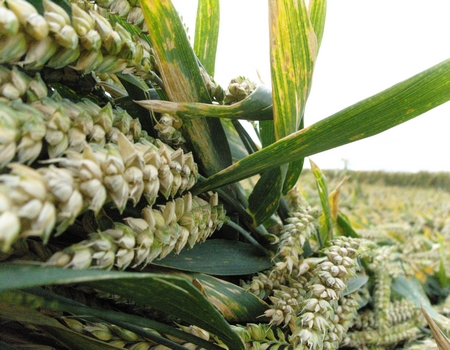
Crop Circle Summary
Alternative Websites |

